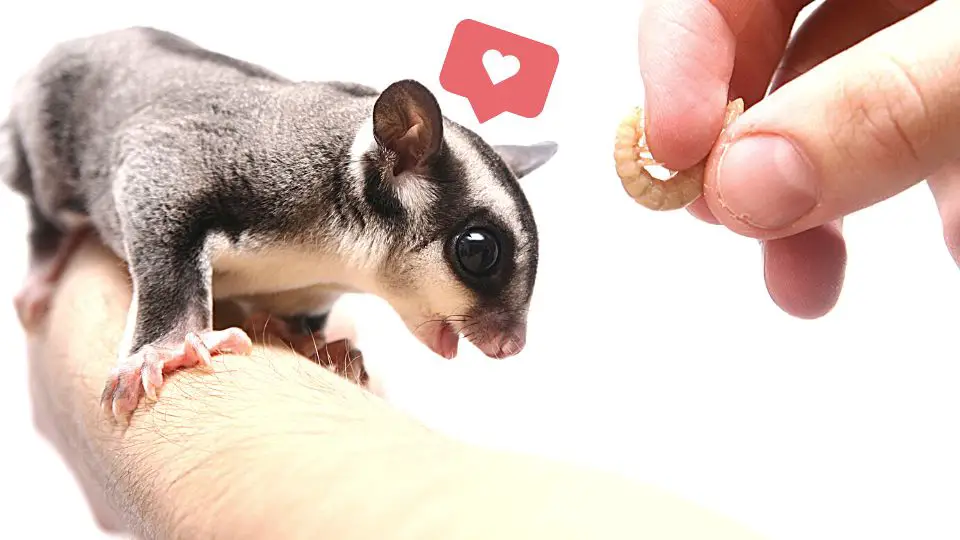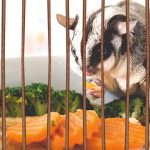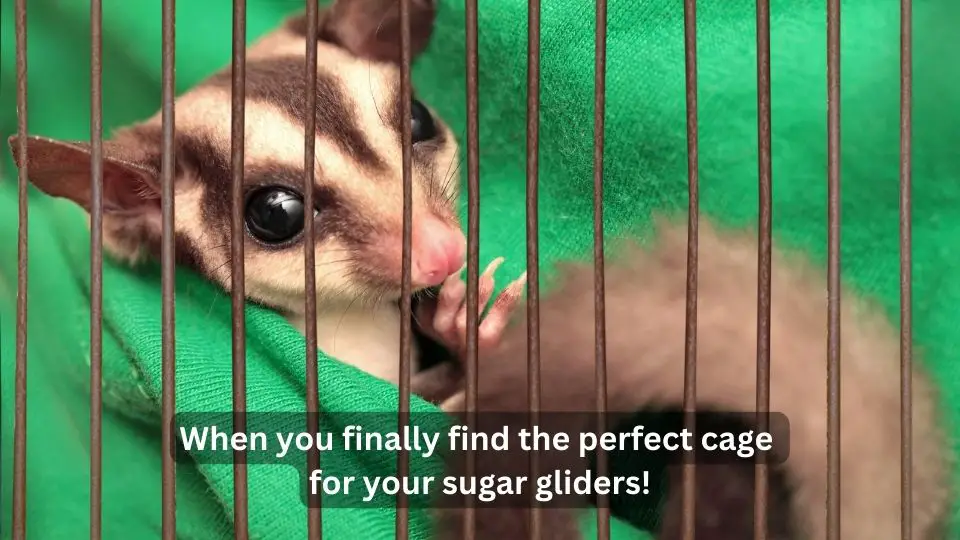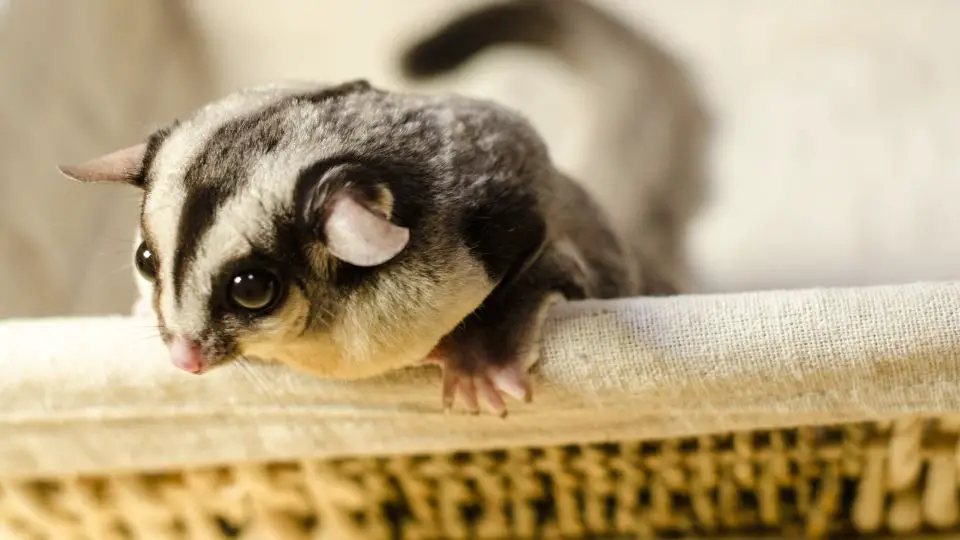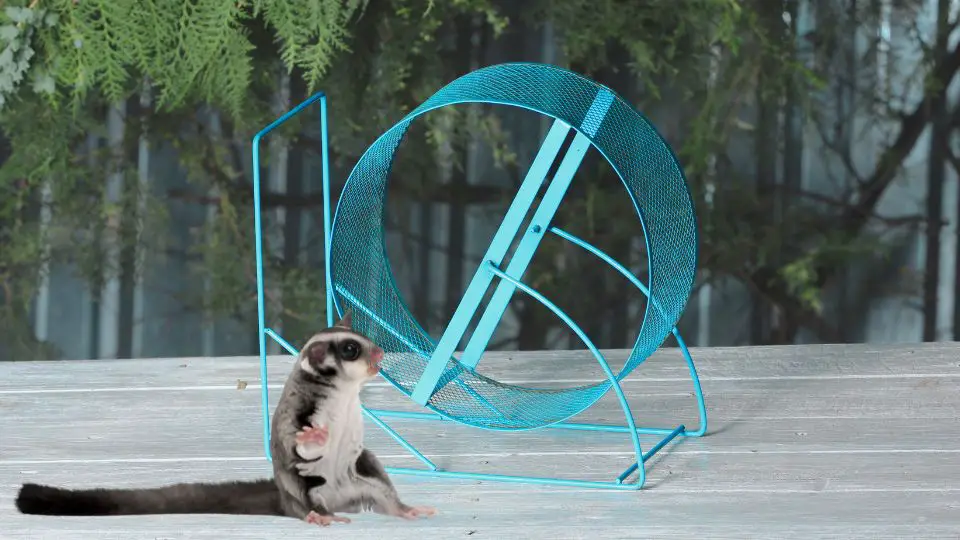Just like any other pet, sugar gliders have specific dietary needs that need to be met in order to keep them healthy and happy.
Your pet sugar glider diet must consist of a variety of different foods. They need a balanced diet that includes proteins, carbohydrates, and fats, as well as vitamins and minerals. And, just like humans, sugar gliders need to watch their sugar intake, so you’ll want to avoid foods that are high in sugar.
Providing them with the right types of food and the right amount is crucial for their overall well-being. They have specific nutritional needs, and failing to do so can lead to serious health problems.
In this article, we’ll take a closer look at the specific nutritional needs of sugar gliders and what types of foods will help them meet those needs.
Nutritional Needs of Sugar Gliders
Nutritional needs are essential for the overall well-being of any animal, and sugar gliders are no exception. Protein should be the main component of their diet and should come from high-quality sources.
Keep in mind that sugar gliders need to eat 15% – 20% of their body weight in food each day. So, if your glider weighs 90 grams, they need to eat between 13 and 18 grams of food every day.
Fats and carbohydrates are also essential for sugar gliders, but in smaller amounts than proteins. Fats should make up about 10% of their diet, while carbohydrates should make up the remaining 5%.
In addition to macronutrients, your pet sugar glider also needs a variety of vitamins and minerals. These are essential for their growth, development, and overall health.
Proteins, Fats, and Carbohydrates
Sugar gliders require a diet that is high in protein, which is essential for maintaining healthy muscles and organs. They should also have a healthy balance of fats and carbohydrates to provide them with enough energy.
Some recommended proteins, fats, and carbohydrates sources for sugar gliders include:
Proteins:
- Meat such as chicken, turkey, and lean beef
- Eggs
- Cottage cheese
Fats:
- Nuts and seeds
- Vegetable oil
- Avocado
Carbohydrates:
- Whole grains
- Fruits
- Vegetables
- Commercial sugar glider diet
Vitamins and Minerals
Sugar gliders require a balanced diet that provides them with all the necessary vitamins and minerals. Some of the most important vitamins and minerals for sugar gliders include vitamin A, vitamin C, vitamin E, calcium, and phosphorus. These can be obtained from a balanced commercial diet or fruits and vegetables.
Calcium and Phosphorus
Calcium and phosphorus are essential minerals for a healthy diet, especially for sugar gliders. These minerals are important for maintaining healthy bones and teeth. A diet that is low in calcium and phosphorus can lead to a number of health problems, such as osteoporosis.
To ensure that your sugar glider is getting enough calcium and phosphorus, it’s important to provide them with a balanced commercial diet or a diet that include:
- kale
- broccoli
- spinach
- milk
- calcium supplement specially formulated for sugar gliders
Providing your sugar glider with a healthy and balanced diet is essential to ensure their well-being. A diet that is high in protein, balanced with healthy fats and carbohydrates, and provides all the necessary vitamins and minerals is crucial for maintaining a healthy sugar glider.
Feeding Schedule and Portion Sizes
Just like us humans, sugar gliders have specific meal times and portion sizes that need to be met to ensure they’re healthy and happy. So, let’s talk about the best feeding schedule and portion sizes for your sugar glider.
Feeding schedule recommendations
One of the first things to know is that sugar gliders are nocturnal animals, which means they’re most active during the night. So, the best time to feed them is in the evening, just before you go to bed.
This way, they’ll have plenty of time to eat and play before settling down for the night. It’s also important to feed them on a regular schedule, so they can get into the habit of eating at the same time every day.
Portion size guidelines
Feeding your pet glider too much can lead to obesity and a variety of health problems. A good rule of thumb is to feed them about 1-2 tablespoons of a commercial diet specially formulated for sugar gliders, per day. And don’t forget to supplement their diet with small amounts of fruits and vegetables and live insects.
However, keep in mind that not all sugar gliders have the same appetite, so you need to be attentive to your glider’s needs, if they leave food in the bowl, it’s a sign they’ve had enough to eat. On the other hand, if they seem to be always hungry, you should check their weight and adjust the portion size accordingly.
We recommend keeping a food journal to track your glider’s eating habits and weigh them regularly to make sure their weight is within the recommended range.
Recommended Foods for Sugar Gliders
When it comes to feeding your sugar glider, it’s important to provide them with a diet that is well-balanced and nutritious. Sugar gliders are omnivores, which means they eat both plant and animal-based foods.
Commercial sugar glider diets
These specially formulated diets provide the right balance of nutrients that sugar gliders need. They typically include a combination of proteins, carbohydrates, and fats, as well as vitamins and minerals. It’s important to choose a diet that is high-quality and specifically formulated for sugar gliders to ensure that your pet is getting all the nutrients they need.
Some popular brands of commercial sugar glider diets are:
- Wombaroo
- Su-pole
- Honey Mist
Fruits and vegetables
Sugar gliders can benefit from eating a variety of fruits and vegetables. They can be fed fresh, frozen or dehydrated. These foods are a great source of vitamins and minerals and should be provided daily in small amounts, about a teaspoon per day.
Most recommended fruits and vegetables include:
- Apples
- Pears
- Blueberries
- Strawberries
- Kale
- Spinach
- Carrots
- Peas
Live insects
Live insects are a great source of protein for sugar gliders. They should be fed in small amounts, a couple of insects per day, as a treat. These can include:
- Crickets
- Mealworms
- Waxworms
- Phoenix worms
Treats
Treats should be given in small amounts and occasionally, they are not a replacement of the main diet. Keep in mind that treats are high in calories and can lead to obesity.
- Unsweetened yogurt
- Hard boiled eggs
- Cooked chicken
- Cooked turkey
Foods to Avoid
There are certain foods that should be avoided, as they can cause serious health problems for your sugar glider.
High-sugar foods
High-sugar foods, such as honey, candy and sweets, should be avoided as they can cause obesity and other health problems. Some high-sugar foods are:
- Chocolate
- Avocado
- Citrus fruits
- Alcohol
- Caffeine
Processed foods
Processed foods are often high in unhealthy fats, salt and sugar. They should be avoided as they can cause digestive problems for sugar gliders. Some examples of processed foods are:
- Potato chips
- French fries
- Soda
Certain fruits and vegetables
Some fruits and vegetables can be toxic to sugar gliders, so it’s important to do your research before feeding them any new foods. Some fruits and vegetables to avoid are:
- Onions
- Garlic
- Tomato leaves
- Rhubarb leaves
- Mushrooms
- Raisins
- Peanuts
Dairy products
Due to their unique digestive system, sugar gliders cannot properly digest milk and other dairy products. Dairy should be avoided as it can cause gastrointestinal distress.
Supplements and Fortified Foods
When it comes to maintaining the health of your sugar glider, it’s important to provide them with a balanced diet that includes all the necessary nutrients. However, sometimes their diet may not provide all the necessary vitamins and minerals, and this is where supplements and fortified foods come in.
Supplements
Remember that you need to choose high-quality supplements and consult a veterinarian to determine the appropriate dosage and administration schedule.
- Calcium supplements: Sugar gliders have a high demand for calcium to maintain strong bones.
- Vitamin D3: Vitamin D3 helps in the absorption of calcium and also helps regulate the immune system.
- Multivitamins: Sugar gliders can benefit from a multivitamin supplement that includes all the essential vitamins and minerals.
Fortified Foods
Fortified foods are a great way to get additional nutrients into your sugar glider’s diet. These foods are specially formulated with added vitamins and minerals.
Examples of fortified foods include:
- Insect-based food pellets or powdered food with added vitamins and minerals.
- Fruits and vegetables with added calcium
- Enriched Insects: You can also purchase insects that have been gut-loaded with a high-nutrient diet to provide additional nutrients to your sugar glider.
It’s important to note that supplements and fortified foods should not be used as a substitute for a balanced diet, but rather as a supplement to it. It is important to consult a veterinarian to determine if your sugar glider is deficient in any specific nutrient and how to proceed.
Sugar glider diet example
Here is an example of a balanced diet for your sugar glider.
Day 1
- Breakfast: 1-2 tablespoons of a commercial sugar glider diet mixed with some chopped hard-boiled eggs
- Mid-morning snack: Small slice of pear or small amount of blueberries
- Lunch: Small amount of cooked chicken mixed with small amount of chopped carrots and green beans
- Mid-afternoon snack: Small slice of apple or small amount of raspberries
- Dinner: 1-2 tablespoons of a commercial sugar glider diet mixed with small amount of cooked lean beef
- Treat : 2-3 live crickets
Day 2
- Breakfast: 1-2 tablespoons of a commercial sugar glider diet mixed with small amount of chopped cooked turkey
- Mid-morning snack: Small slice of kiwi or small amount of diced papaya
- Lunch: Small amount of cooked fish mixed with small amount of diced bell pepper and zucchini
- Mid-afternoon snack: Small slice of mango or small amount of blackberries
- Dinner: 1-2 tablespoons of a commercial sugar glider diet mixed with small amount of mashed avocado
- Treat : 2-3 live mealworms
Day 3
- Breakfast: 1-2 tablespoons of a commercial sugar glider diet mixed with small amount of diced banana
- Mid-morning snack: Small slice of peach or small amount of diced pineapple
- Lunch: Small amount of cottage cheese mixed with small amount of diced cucumber and tomatoes
- Mid-afternoon snack: Small slice of watermelon or small amount of diced melon
- Dinner: 1-2 tablespoons of a commercial sugar glider diet mixed with small amount of diced apricots
- Treat : 2-3 live Phoenix worms
As you can see, this 3-day diet for a sugar glider includes more variety of fruits and vegetables, some lean meats and fish, and also the use of treats. However, it is important to note that not all sugar gliders will like or tolerate all foods, so it’s important to observe their preferences and observe their weight, health and overall well-being.
Also, it is important to consult a veterinarian for personalized diet recommendations as they will take in account the particular needs and health of your sugar glider, and also the amount of food and when to feed it to your sugar glider.
Conclusion
Feeding your sugar glider correctly is essential for their health and happiness. A balanced diet of commercial diets, fresh fruits and vegetables, live insects, and occasional treats is the best way to ensure that your pet is getting all the nutrients they need.
Be sure to avoid foods that can be toxic, such as onions and garlic, and provide any necessary supplements as recommended by your veterinarian. With the right diet and regular veterinary checkups, your sugar glider will be a happy and healthy pet.

